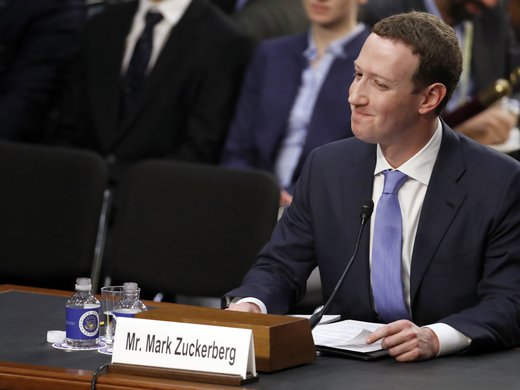In December 2021, the Omicron variant of the COVID-19 virus was quickly spreading around the world. Cases were escalating, but so too was abuse of those discussing them. On December 21, Dr. Naheed Dosani posted on Twitter, asking followers to “retweet this if you cancelled your holiday get together plans and know you are doing the right thing.” Dosani has spent the pandemic caring for COVID-19 patients as the medical director of the COVID-19 isolation/housing program in the Peel Region of Ontario and communicating about health equity to his nearly 60,000 Twitter followers.
In response to Dosani’s tweet, Ezra Levant, the far-right founder of Rebel News, offered a “$5,000 bounty to anyone who sends video of this fearmongering TV doctor breaking Covid rules.” Another doctor and a former Liberal political candidate, Nathan Stall, was similarly targeted by Levant, and reported it to the police. Although bounties are explicitly forbidden under Twitter’s terms of service and multiple users reported the tweet, the platform did not find any violation of its rules. Some users, meanwhile, pushed back to support Dosani, tweeting appreciation with the hashtag #IStandwithDrDosani.
Unfortunately, this is not an isolated incident. Online and in-person harassment of health communicators has become a significant problem during the pandemic. Protests outside hospitals in summer 2021 prevented some ambulances from reaching hospitals. In response, Canada’s Liberal government criminalized the acts of intimidating a health professional and preventing access to health facilities in Bill C-3, passed in December 2021.
The problem of harassment extends far beyond Canada. In the summer of 2021, Nature conducted a survey of more than 300 scientists. Fifteen percent had received death threats. More than 40 percent reported “emotional or physical distress” after discussing COVID-19 on the media or posting about it on social media. A more recent survey by The Guardian of 42 advisers on COVID-19 to the UK government found that more than 75 percent of those surveyed had “received significant abuse about government policy, their views on the science, or their research findings.” The survey seems to indicate that much of this abuse occurs online, but privately through e-mail or direct messages on Twitter. In many cases, respondents had to spend time reporting threats to the police, conducting security reviews of their homes and workplaces, or even cooperating with private security firms hired by their employers to keep them safe.
At present, most of what we know about such issues has come through surveys, which rely on self-reporting, or from media articles about individual incidents, such as what happened to Naheed Dosani. This may not provide the full picture, although what we already see is horrifying enough. It is likely, too, that this harassment is contributing to the high attrition rate of health-care workers: in the United States; around 20 percent have left the profession since the pandemic began.
The lessons so far are that platforms still, two years into a pandemic, have not prioritized those who provide our most reliable information.
There is a lot that we do not yet know. We do not know how far individual incidents reflect broader trends among health communicators. We have often focused on threats to public health officials and some of the most prominent doctors on Twitter rather than on those that other people communicating about the pandemic, such as journalists, are experiencing. We do not have clear data on how online harassment varies depending on the gender, race or profession of those targeted. And we do not have enough understanding of how these attacks are affecting those targeted.
To address some of these issues, I received a grant from the Social Sciences and Humanities Research Council in Canada to explore the online harassment of health communicators in Canada. The research team includes Dr. Chris Tenove, who is interviewing health communicators to understand how they are targeted, what they deem harassment and how they can be better supported. I and my research team have partnered with the Institute for Strategic Dialogue to gain a quantitative understanding of abuse on social media.
Chris Tenove and I have previously looked at the same problem in a different field: politics. We explored how online harassment affected political campaigning during the 2019 federal election in Canada. Our findings did not make for easy reading. We discovered that around 40 percent of all tweets directed at candidates were uncivil and 16 percent were abusive. Only seven percent were positive. Our final policy report also featured stories told in their own words by candidates who had experienced abuse.
Overall, we found that “pervasive incivility and frequent abuse threaten the security and wellbeing of public figures and their staff, undermine productive engagement between citizens and candidates during campaigns, exacerbate distrust and polarization in our politics, and present further barriers to political participation by people from under-represented groups.”
We are seeing similar dynamics play out now for health communicators. The difference is that political campaigns last a few weeks. The COVID-19 pandemic is lasting years. Our research is still under way. But it is concerning that health communicators seem to be paying an increasingly high price for transparently and publicly debating important ideas around how to address the pandemic, for advocating for equitable public health measures and for conveying high-quality information to a broad public. I worry that we will see similar dynamics to politics. This is especially concerning when we need to hear more perspectives from marginalized people to improve public health, not less.
What makes matters worse is that this problem was a high priority for social media platforms. In 2020, the platforms responded fairly quickly to highlight official information about COVID-19 and develop policies about COVID-19 disinformation. Sometimes, after multiple violations of these policies, platforms will remove high-profile figures. In early January 2022, Twitter finally removed the personal account of US Representative Marjorie Taylor Greene, for repeatedly disseminating false information about COVID-19 (her official account remains active and she can still post on many other social media platforms, such as Instagram).
But online abuse of health communicators persists, and false information runs rampant. It wasn’t until the Canadian Minister of Public Safety, Marco Mendicino, called out Twitter for its inaction regarding a post threatening the president of the Canadian Medical Association, Dr. Katharine Smart, that the platform removed the post. Time will tell if Bill C-3 in Canada will make a difference.
The lessons so far are that platforms still, two years into a pandemic, have not prioritized those who provide our most reliable information. Nor do they reliably enforce their own terms of service. As the huge wave of Omicron cases spreads around Canada and the world, we will need our health communicators. And the online environment is making their lives more difficult than ever.



